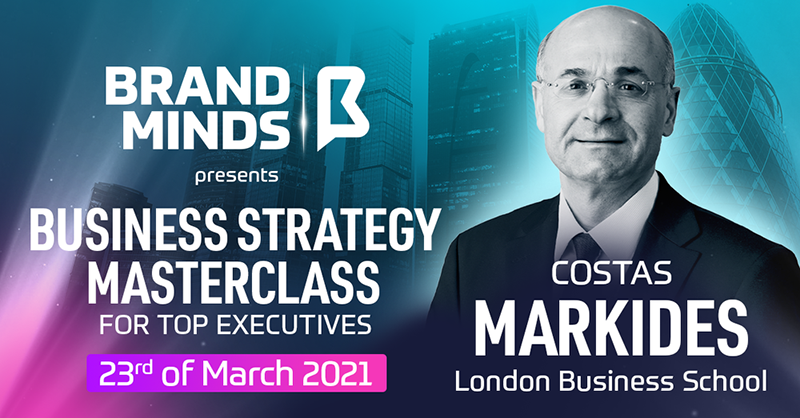Top 5 most in-demand soft skills you need to grow in 2021
Looking to develop your soft skills? Read on to discover the Top 5 most in-demand soft skills you need to grow in 2021.
Professional growth and career advancement hinge on the employee’s desire and ability to learn new things.
Whether you are looking to specialize in your field which means you’d want to go deep, or you are looking to diversify which implies going left and right (learn more about the T-shaped marketer), learning never stops. And it shouldn’t, rightfully so.
Over the past few years, LinkedIn, the 722-million member professional social platform, has been curating a list of the most in-demand soft and hard skills employers are looking for.
Here is LinkedIn’s list for the most in-demand soft and hard skills 2020.
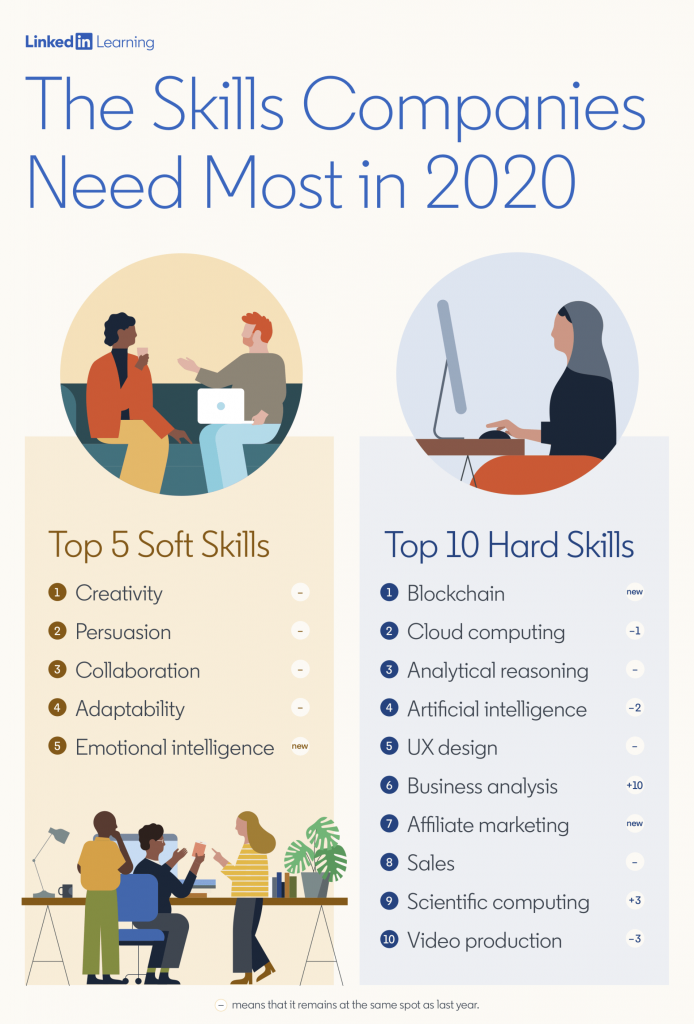
What are the Top 5 soft skills companies look for in their employees and new hires in 2020?
- Creativity
- Persuasion
- Collaboration
- Adaptability
- Emotional intelligence
Let’s talk about each of them.
1. CREATIVITY
Creativity is now the #1 soft skill companies are looking for three years in a row.
Why is creativity in such high-demand?
Listen to creativity expert and BRAND MINDS speaker Denise Jacobs:
Can creativity be taught or is it an inherent trait?
I believe one of the most creative organizations in the world today is NASA. Going into space requires finding solutions to unique problems and even unknown situations. That certainly pushes the brightest minds at NASA to come up with creative and out-of-the-box solutions.
In the 1960s, NASA reached out to Dr George Land, a creative performance researcher and enrolled his expertise in devising a creativity test to help with the selection for innovative engineers and scientists. Dr Land accepted the challenge and devised a creativity assessment that worked very well.
Inspired by the results and curious to know more about where creativity comes from, Dr Land conducted a research study to test the creativity of 1,600 children ranging in ages from 3 to 5 years old. He re-tested the same children at 10 years of age, and again at 15 years of age. And then he extended the testing pool to include 1 million adults.
What exactly did Dr Land test for?
He tested for the ability to look at a problem and come up with new, different and innovative ideas.
Here are the results:
5-year-olds: 98% imaginative
10-year-olds: 30% imaginative
15-year-olds: 12% imaginative
31-year-olds: 2% imaginative
That’s quite a shock, isn’t it?
We are the most creative in our childhood and we lose our creativity growing up.
What is the reason?
Dr Land gave the following explanation in his book, Breaking point and beyond:
What we have concluded is that non-creative behaviour is learned.
Is there something we can do about it?
In his 2016 Tedx Talk, Dr Land says there is a way to undo this process.
Let’s hear from Dr Land (08:37):
First of all, we need to think about creativity beyond artistic abilities.
Artists are not the only creative people.
Professionals in every industry have the ability to be creative. Because in the workplace, being creative means looking at a problem from a different viewpoint and coming up with a fresh solution, as Dr Land explained a few years ago.
It’s not about waiting to be inspired; it’s about thinking creatively.
According to Martin Lindstrom, brand expert and BRAND MINDS speaker, the first step towards creativity is taking time off from your smartphone, observing the people around you and essentially allowing yourself to be present.
2. PERSUASION
In business communication, persuasion is the process of presenting arguments to move, motivate, or change your audience.
Persuasion is one of the most important skills that a leader needs. He has the vision and he sets the goal; he needs to move and motivate his employees to fulfil the vision and meet the goal.
It’s the leader who tells his colleagues Come with me and let’s accomplish the mission together. This is the authoritative leader who provides employees with inspiration, motivation, empowerment and a sense of accomplishment.
Or the visionary leader whose motto is Embrace my vision. This type of leadership is called visionary leadership. The visionary leader must hone his persuasion skills to inspire and motivate people to pursue a long-term vision. Learn more about leadership styles: 12 Leadership Styles for Successful Leaders (complete list) with Pros & Cons.
Persuasion skills are necessary for sales and marketing as well. With a 30-year career researching the science of influence, Dr Robert Cialdini is the world’s most renowned persuasion expert and a BRAND MINDS speaker.
His Theory of Influence is based on seven key principles:
- Reciprocity,
- Commitment and consistency,
- Social proof,
- Authority,
- Liking,
- Scarcity,
- Unity.
Brands build on them to increase brand awareness and sales. Dr Cialdini’s latest insights on persuasion are in his 2016 book Pre-Suasion: A Revolutionary Way to Influence and Persuade.
3. COLLABORATION
We are living and working in a fast-paced environment.
Startups with a handful of employees that work as one are able to move quickly and more efficiently. Corporations with thousands of employees are slow and bureaucratic.
There are many examples of hundred-year-old brands outcompeted by new entrants on the market.
That’s where agility comes into play as a way of organizational transformation with one goal: adapt.
Want to learn more about agility? Read 22 benefits of the agile organization.
For an organization to become agile, its employees must form small teams. Every team member is expected to collaborate with each other. And that’s more difficult than you might think.
To meet the set goals, team members must learn to listen to each other, be supportive, be generous, learn to communicate clearly and openly, share knowledge and information, refrain from judgement, reject bias, debate and adapt.
The team leader must also be an example of effective communication and collaboration.
4. ADAPTABILITY
At the time of writing, the world has been fighting to end the COVID-19 pandemic for almost a year.
Our private and professional lives have been profoundly affected.
Many businesses are fighting to survive while others have already closed their doors. Adaptability has never been more important.
Why are companies looking for employees with a high ability to adapt?
Because these employees are a great asset to the company.
Highly-adaptable employees are:
- Willing to experiment;
- Undeterred by failure;
- Use the failure as an opportunity to learn;
- Resourceful;
- Keep an open mind;
- Have a growth mindset.
5. EMOTIONAL INTELLIGENCE
Emotional intelligence is a new entry in LinkedIn’s Top 5 most in-demand skills of 2020.
Why are companies looking for emotional intelligent employees?
Let’s first find out what is emotional intelligence.
Emotional intelligence is the ability to perceive, evaluate, and respond to your own emotions and the emotions of others. It’s the skill that facilitates and nurtures the other four.
Daniel Goleman, one of the world’s leading psychologists and BRAND MINDS speaker, introduced the concept of EQ or emotional intelligence in his 1995 bestseller, Emotional Intelligence.
According to Daniel Goleman, there are 5 key elements of emotional intelligence:
- Self-awareness;
- Self-regulation;
- Motivation;
- Empathy;
- Social skills.
Employees with high EQ collaborate better, are more adaptable, use persuasion for the right reasons, are motivated and able to motivate others.
The workplace benefits from increased engagement and the business are more likely to find creative ways to stay ahead of the competition.
Join the Conversation
We’d love to hear what you have to say.
Get in touch with us on our LinkedIn Page, Facebook Page, Twitter or TikTok.
Measure How People Feel about Your Video Content with this Emotional Intelligence Platform
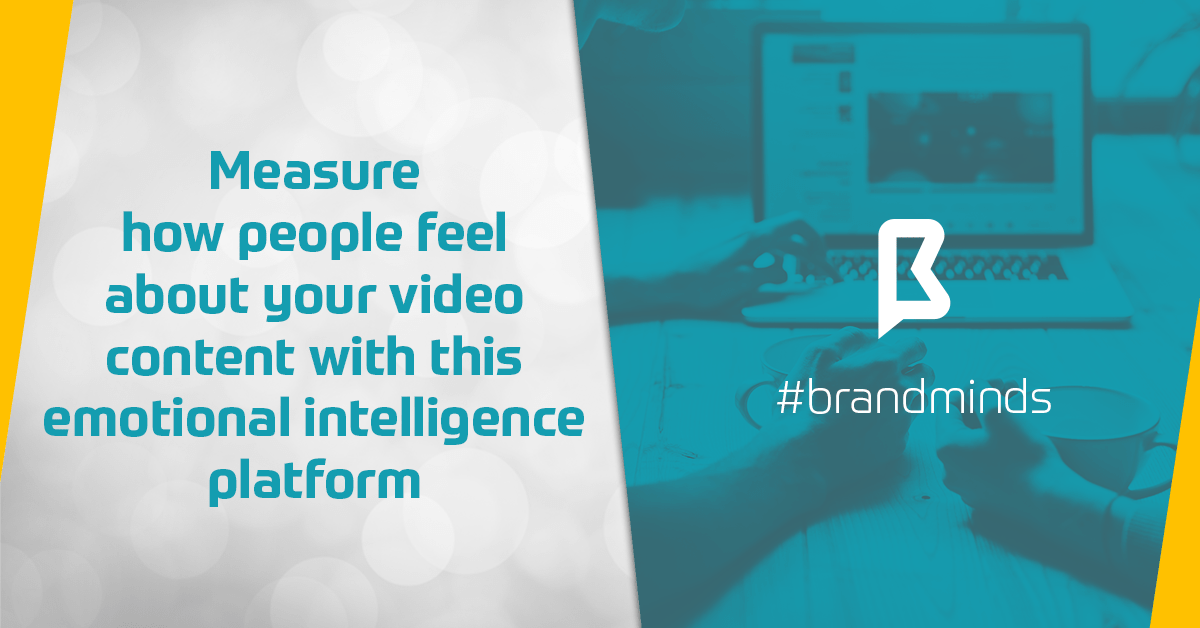
Latest statistics say that where both video and text are available on the same page, 72% of people would rather use video to learn about a product or service.
Learn more: Video Marketing Statistics 2018 – How Brands used Video for Business
Businesses acknowledged this rising trend in customer behaviour and began producing more video content to cater to their customers’ needs.
But when you produce video content (or any content for that matter!) you need to measure its impact on the consumer, you need to find out whether it had the expected outcome.
Realeyes is an emotional intelligence platform which uses the power of AI to help brands measure their video content at scale.

[bctt tweet=”Use Realeyes, the emotional intelligence platform to help you measure your video content at scale.” username=”brand_minds”]
With Realeyes marketers can:
- transform the impact of their video content;
- make more informed media decisions;
- eliminate media waste.
What is Realeyes?
Realeyes is an AI powered platform which uses computer vision and machine learning to measure how people feel as they view your video content online through their webcam.
It was co-founded by Mihkel Jäätma in 2007 at Oxford University. After ten years of breakthrough R&D innovation, Realeyes is now the technology leader in emotion AI for marketing performance, providing unfiltered emotional responses from consumers to businesses.
The innovative emotional intelligence platform has offices in Boston, London, New York and Budapest.
According to TechCrunch, the London-based startup has raised $16.2 million in funding, money that it plans to use to expand in engineering and business development.
It’s fast growing – revenues have shot up 932% in the last four years.
Some of its customers are Coca Cola, Mars, Publicis, Turner, Heineken, LG, Twix etc
How does Realeyes work?
Realeyes delivers results by running your video content through 4 stages:
1.Set the brief
Upload your own or competitor images, GIFs or videos at any stage of its life-cycle. Generally, we source a sample audience of 300 viewers based on your campaign objectives.
2. Collect Data
The platform measures the attention, emotions and sentiment of your sample audience as they watch your video content on their own device at home. You can even ask brand lift survey questions too.
3. Get results
The results are delivered to the Realeyes dashboard within 24 hours (depending on the sample), enabling you to slice and dice your audience data to see how different segments responded.
4. Act on insight
The Realeyes highly-experienced marketing professionals team craft your reports; this way your results are turned into valuable insights you can act on with confidence.
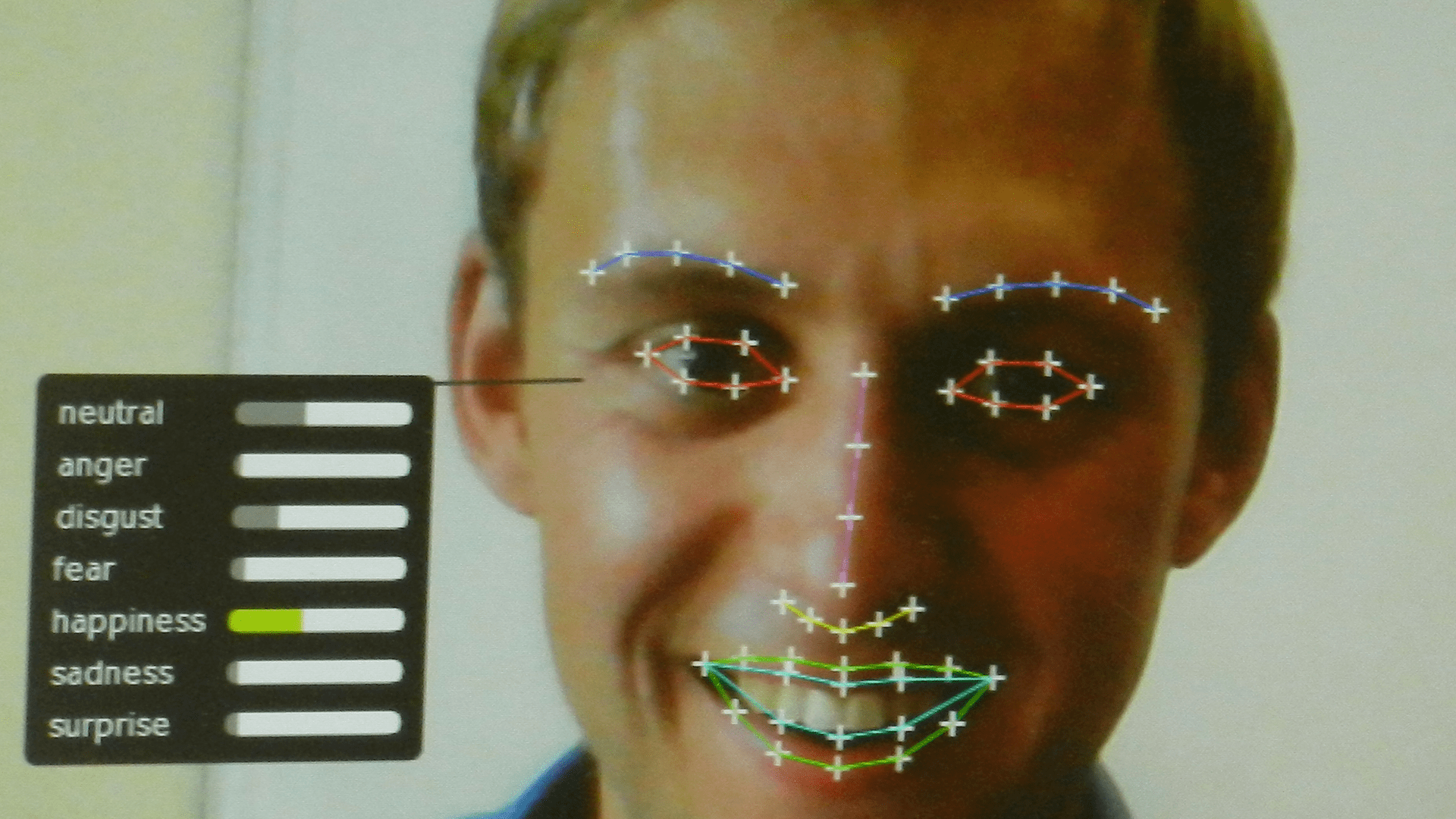
martechtoday.com
What does Realeyes measure?
Realeyes measures attention, emotions and sentiment.
1. Attention
The attention metric shows at which point your audience attention rises and falls whilst viewing your content. Attention is measured on volume and quality.
2. Emotions
Emotions are tracked with the help of the Realeyes Facial Action Coding System (FACS) used by Paul Ekman to categorise human facial movements.
Facial expressions are broken down into the individual Action Units that make up a specific expression over time. The output of your collected audience emotions is aggregated and displayed within the dashboard as six basic emotion metrics and three proprietary metrics for measuring the emotional experience.
The six basic emotions are: happiness, surprise, confusion, sadness, disgust, scared.
In addition to these basic emotion metrics, Realeyes also tracks a variety of proprietary metrics or classifiers.
These classifiers have been derived through their own research and are:
Engagement – when a participant has an expressive reaction to a stimulus.
Valence – whether a reaction is positive or negative.
Negativity – the percentage of people showing an emotion classified as negative.
3. Sentiment
With the sentiment analysis you can discover how audiences feel about your brand and content, expressed in their own words. Sentiment Analysis uses AI to analyse open ended consumer comments to identify the prevailing emotional opinion within the text, determining whether the overall sentiment is positive, negative, or neutral.
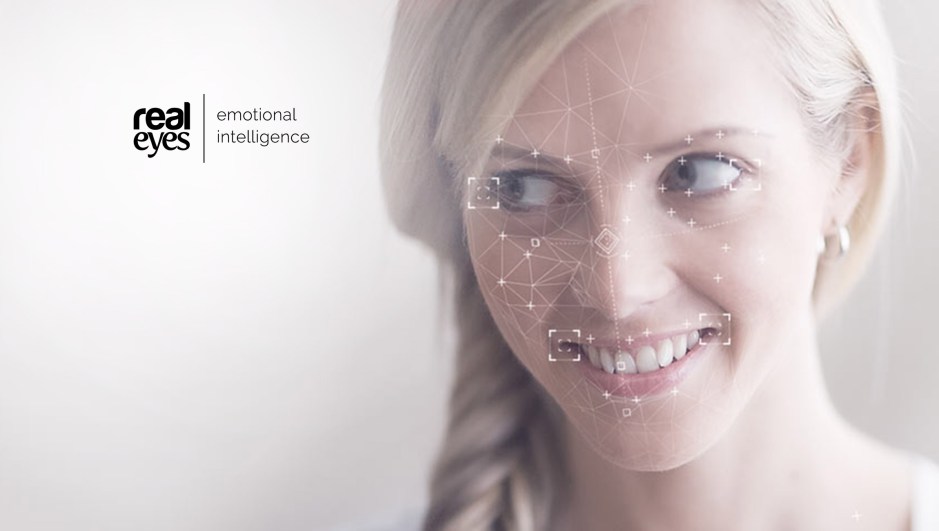
martechseries.com
Here are 6 benefits of using Realeyes:
1.Optimise video
With second by second emotion traces, see exactly how people react to your content – what works and where it might fall short.
2. Select winners
The Realeyes EmotionAll® score ranks your assets – see at a glance which videos to push or pull.
3. Target audiences
The score enables you to weed out the low performers and identify which demographic responds best to your video.
4. Compare norms
See how your video performs amongst different markets, genders, or age groups as well as custom demographic segments, in order to fully optimize your targeting.
5. Drive efficiency
Skew spend towards the most engaged audiences and invest in high performing content.
6. Predict performance
Capitalize on your earned media potential and inform channel split decisions based on the 1 to 10 score.
Additional advantages
- Snapshot result
Get an instant overview of what people are saying about your brand, ad or campaign with automatically ranked responses.
- Specific audience insight
By combining Sentiment Analysis data (consciously reported feedback) with our unique Attention and Emotion data (subconscious feedback), collected using webcams, we create a comprehensive report of the effectiveness of your creative.
- Global solution
Sentiment analysis is not restricted to English-speaking audiences, with analysis of French, German, Italian, Japanese, Korean, Portuguese, Spanish, Chinese (Simplified), Chinese (Traditional) also included.
- Automation
Unlike other similar tools that require manual effort, Sentiment Analysis is completely automated and is fully integrated into our dashboard.
2018 – The Year of Augmented Humanity
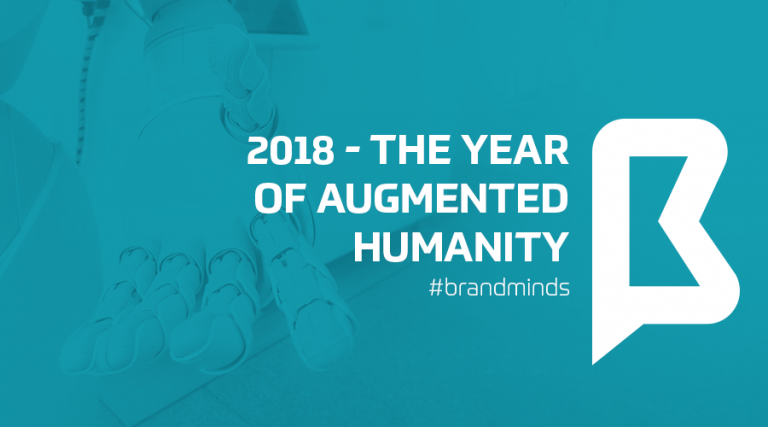
Isobar predicts that 2018 will be the year of Augmented Humanity, a year where technology enhances and scales our most human attributes. In 2018, technological interfaces will become more natural and instinctive, technology will automate repetitive tasks to free up time for creativity and compassion, and artificial intelligence will meet emotional intelligence.
Isobar’s innovation and strategy experts from around the world have defined five key trends that explore this evolving relationship between humanity and technology and predict a harmonious future. Augmented Humanity explores the ways in which technology enhances and fuels our most human attributes – the ability to recognise and trust each other, to adapt to changing circumstances and the power to deliver true creativity.
Artificial intelligence is great, but humans score on emotional intelligence. The power of being human is in empathy. This cannot be automated or outsourced. Augmented Humanity will use technology to scale everything that is best and most powerful about human interaction.”- Jean Lin, Isobar’s Global CEO.
The report argues that we may one day view the era of anonymous, one size fits all transactions as a temporary blip in our evolution, and that as technology advances it will become more human, not less. It will return us to a time where voice will be the primary way we interact with the world, where we will be recognised and rewarded in stores, and where we will buy more directly from trusted suppliers.

source: medium
Isobar’s five key trends for 2018 explore this intersection of technology and humanity, magic and the machine, code and conscience:
1. Body Talk explores the body as an interface, as our eyes and ears replace touching and tapping.
2. Powered by People tackles the shift from customers to communities as technology turbocharges the sharing economy.
3. The Economy of Me looks at the power of AI to deliver ever more personalised products, prices and places.
4. The Ethical Algorithm tackles technology as a force for good; in a world of fake news and algorithm bias is there such a thing as moral code?
5. The Makers and the Machines explores the extraordinary union of art and technology to create outputs we could never before imagine.
You can download the report here.
Emotional Intelligence 2.0. in business and how it works
Emotional Intelligence 2.0., the book written by Travis Bradberry and Jean Greaves, delivers a step-by-step program for increasing your EQ via four, core EQ skills that enable you to achieve your fullest potential: Self-Awareness, Self-Management, Social Awareness and Relationship Management.
Emotional intelligence is the ability to identify and manage your emotions, as well as the ability to recognize and influence the emotions of others. It’s also defined as the balance between the emotional and rational parts of your brain.
“As a business leader, emotional intelligence can help you keep your emotions in check and identify when your team members are frustrated, burnt out, dissatisfied, or feeling other emotions that could impact their work. And the higher your EI, the more likely you are to be successful in the workplace. In his research, Bradberry found high emotional intelligence among 90 percent of top performers, but only 20 percent of bottom performers.While the process for measuring a person’s IQ is relatively straightforward, developing an accurate assessment of someone’s emotional quotient (EQ) is a bit trickier and generally requires an honest self-evaluation,” wrote inc.com.
Moreover, accordingly Travis Bradberry, to emotional intelligence is the “something” in each of us that is a bit intangible. It affects how we manage behavior, navigate social complexities, and make personal decisions that achieve positive results. Emotional intelligence is made up of four core skills that pair up under two primary competencies: personal competence and social competence.
Emotional intelligence taps into a fundamental element of human behavior that is distinct from your intellect. There is no known connection between IQ and emotional intelligence; you simply can’t predict emotional intelligence based on how smart someone is. Intelligence is your ability to learn, and it’s the same at age 15 as it is at age 50. Emotional intelligence, on the other hand, is a flexible set of skills that can be acquired and improved with practice. Although some people are naturally more emotionally intelligent than others, you can develop high emotional intelligence even if you aren’t born with it.
“It’s a powerful way to focus your energy in one direction with a tremendous result. TalentSmart tested emotional intelligence alongside 33 other important workplace skills, and found that emotional intelligence is the strongest predictor of performance, explaining a full 58% of success in all types of jobs. Your emotional intelligence is the foundation for a host of critical skills—it impacts most everything you do and say each day. (….) Naturally, people with a high degree of emotional intelligence make more money—an average of $29,000 more per year than people with a low degree of emotional intelligence. The link between emotional intelligence and earnings is so direct that every point increase in emotional intelligence adds $1,300 to an annual salary. These findings hold true for people in all industries, at all levels, in every region of the world,” added Bradberry in his LinkedIn post.
WHO IS DANIEL GOLEMAN?
Daniel Goleman is an internationally known psychologist who lectures frequently to professional groups, business audiences, and on college campuses. As a science journalist Goleman reported on the brain and behavioral sciences for The New York Times for many years. His 1995 book, Emotional Intelligence was on The New York Times bestseller list for a year-and-a-half, with more than 5,000,000 copies in print worldwide in 40 languages, and has been a best seller in many countries. Apart from his books on emotional intelligence, Goleman has written books on topics including self-deception, creativity, transparency, meditation, social and emotional learning, ecoliteracy and the ecological crisis.
The Harvard Business Review called emotional intelligence— which discounts IQ as the sole measure of one’s abilities — “a revolutionary, paradigm-shattering idea” and chose his article “What Makes a Leader” as one of ten “must-read” articles from its pages. Emotional Intelligence was named one of the 25 “Most Influential Business Management Books” by TIME Magazine. The Financial Times, Wall Street Journal and Accenture Insititute for Strategic Change have listed Goleman among the most influential business thinkers.
Goleman is a co-founder of the Collaborative for Academic, Social, and Emotional Learning (www.casel.org), originally at the Yale Child Studies Center and now at the University of Illinois at Chicago. CASEL’s mission centers on bringing evidence-based programs in emotional literacy to schools worldwide.
He currently co-directs the Consortium for Research on Emotional Intelligence in Organizations (www.eiconsortium.org) at Rutgers University. The consortium fosters research partnerships between academic scholars and practitioners on the role emotional intelligence plays in excellence.
Goleman is a board member of the Mind & Life Institute, which fosters dialogues and research collaborations among contemplative practitioners and scientists. Goleman has organized a series of intensive conversations between the Dalai Lama and scientists, which resulted in the books Healthy Emotions, and Destructive Emotions. He is currently editing a book from the most recent dialogue on ecology, interdependence, and ethics.
His most recent book, Leadership: The Power of Emotional Intelligence, offers an up-to-date summary of his thinking on leadership by collecting key excerpts from his books together for the first time in one volume with his articles from the Harvard Business Review. These include “What Makes a Leader? and “Leadership that Gets Results.”
Goleman’s other recent book, The Brain and Emotional Intelligence: New Insights gathers together recent findings from brain research and other sources on topics ranging from creativity and optimal performance, the brain-to-brain connection in leadership, and to how to enhance emotional intelligence itself.
Goleman’s 2009 book Ecological Intelligence: How Knowing the Hidden Impacts of What We Buy Can Change Everything argues that new information technologies could create “radical transparency,” allowing us to know the environmental, health, and social consequences of what we buy. As shoppers use point-of-purchase ecological comparisons to guide their purchases, market share would shift to support steady, incremental upgrades in how products are made – changing ever thing for the better.
Goleman’s work as a science journalist has been recognized with many awards, including the Washburn Award for science journalism, a Lifetime Career Award from the American Psychological Association, and he was made a Fellow of the American Association for the Advancement of Science in recognition of his communicating science to the general public.
15 Things you might not know about Daniel Goleman
Daniel Goleman is one of the world’s renowned psychologists. He was a speaker at BRAND MINDS 2018.
BRAND MINDS is The Central and European Business Summit taking place in Bucharest, Romania.
Daniel Goleman is an internationally known psychologist who lectures frequently to professional groups, business audiences, and on college campuses. As a science journalist Goleman reported on the brain and behavioural sciences for The New York Times for many years.
Here you can find some pieces of information you might not know about Daniel Goleman:
1.His 1995 book, Emotional Intelligence was on The New York Times bestseller list for a year-and-a-half, with more than 5,000,000 copies in print worldwide in 40 languages, and has been a best seller in many countries. Apart from his books on emotional intelligence, Goleman has written books on topics including self-deception, creativity, transparency, meditation, social and emotional learning, eco-literacy and the ecological crisis.
2. The Harvard Business Review called emotional intelligence— which discounts IQ as the sole measure of one’s abilities — “a revolutionary, paradigm-shattering idea” and chose his article “What Makes a Leader” as one of ten “must-read” articles from its pages.
3. “Emotional Intelligence” was named one of the 25 “Most Influential Business Management Books” by TIME Magazine. The Financial Times, Wall Street Journal and Accenture Insititute for Strategic Change have listed Goleman among the most influential business thinkers.
4. Goleman is a co-founder of the Collaborative for Academic, Social, and Emotional Learning (www.casel.org), originally at the Yale Child Studies Center and now at the University of Illinois at Chicago. CASEL’s mission centres on bringing evidence-based programs in emotional literacy to schools worldwide.
5. He currently co-directs the Consortium for Research on Emotional Intelligence in Organizations (www.eiconsortium.org) at Rutgers University. The consortium fosters research partnerships between academic scholars and practitioners on the role emotional intelligence plays in excellence.
6. Goleman is a board member of the Mind & Life Institute, which fosters dialogues and research collaborations among contemplative practitioners and scientists. Goleman has organized a series of intensive conversations between the Dalai Lama and scientists, which resulted in the books Healthy Emotions, and Destructive Emotions. He is currently editing a book from the most recent dialogue on ecology, interdependence, and ethics.
7. His most recent book, Leadership: The Power of Emotional Intelligence, offers an up-to-date summary of his thinking on leadership by collecting key excerpts from his books together for the first time in one volume with his articles from the Harvard Business Review. These include “What Makes a Leader? and “Leadership that Gets Results.”
8. Goleman’s other recent book, The Brain and Emotional Intelligence: New Insights gathers together recent findings from brain research and other sources on topics ranging from creativity and optimal performance, the brain-to-brain connection in leadership, and to how to enhance emotional intelligence itself.
9. His work as a science journalist has been recognized with many awards, including the Washburn Award for science journalism, a Lifetime Career Award from the American Psychological Association, and he was made a Fellow of the American Association for the Advancement of Science in recognition of his communicating science to the general public.
10. Recruited by the New York Times to cover psychology and related fields, in 1984 he began a twelve-year sojourn. He learned much about science journalism from his editors and colleagues, a talented crew on the science desk, and the Times offered remarkable access and visibility. But he found that his urge to write about ideas with impact sent him in directions that did not always fit what the Times saw as news.
11. His wife Tara and him tried to spend a good deal of their free time in meditation retreats or travelling together to places they enjoy that nourish this side of their lives. “Life’s simple pleasures—a walk on a beach, playing with grandchildren, a good conversation with a friend—have more appeal to me than professional honours or ambitions,” said Goleman.
12. According to him, vitality arises from sheer human contact, especially from loving connections. This makes the people we care about most an elixir of sorts, an ever-renewing source of energy. “The neural exchange between a grandparent and a toddler, between lovers or a satisfied couple, or among good friends, has palpable virtues…the practical lesson for us all comes down to, Nourish your social connections,” he added.
13. He is twice a Pulitzer Prize nominee. Moreover, The Wall Street Journal ranked him one of the 10 most influential business thinkers and he was named on the 2011 and 2013 Thinkers50‘s editions and a top business guru by Accenture Institute for Strategic Change. His article “ What Makes a Leader?” remains the most requested reprint in the history of Harvard Business Review.
14. Goleman’s newest book, Altered Traits: Science Reveals How Meditation Changes Your Mind, Brain and Body, is co-written with Richard Davidson and will be released September 5, 2017. Through cutting edge research, Goleman and Davidson explore how meditation and mindfulness can achieve real, positive, and lasting mental and behavioural change.
15. In addition to his numerous professional and academic achievements, Goleman stresses how important his private and personal life is to him on his personal website. “While a bio like this focuses on one’s public life, I find that over the years my private life has grown increasingly important to me, particularly as the years allow me to spend less time running around and more time just being. I find more and more that what satisfies me has little to do with how well one or another book does— although the good works I participate in continue to matter much,” he confesses.
Are you a #worldchanger?
Come to BRAND MINDS 2020!
Here are our first confirmed speakers; we will be announcing more speakers in the coming months so stay tuned!
Malcolm Gladwell, Martin Lindstrom and Michio Kaku
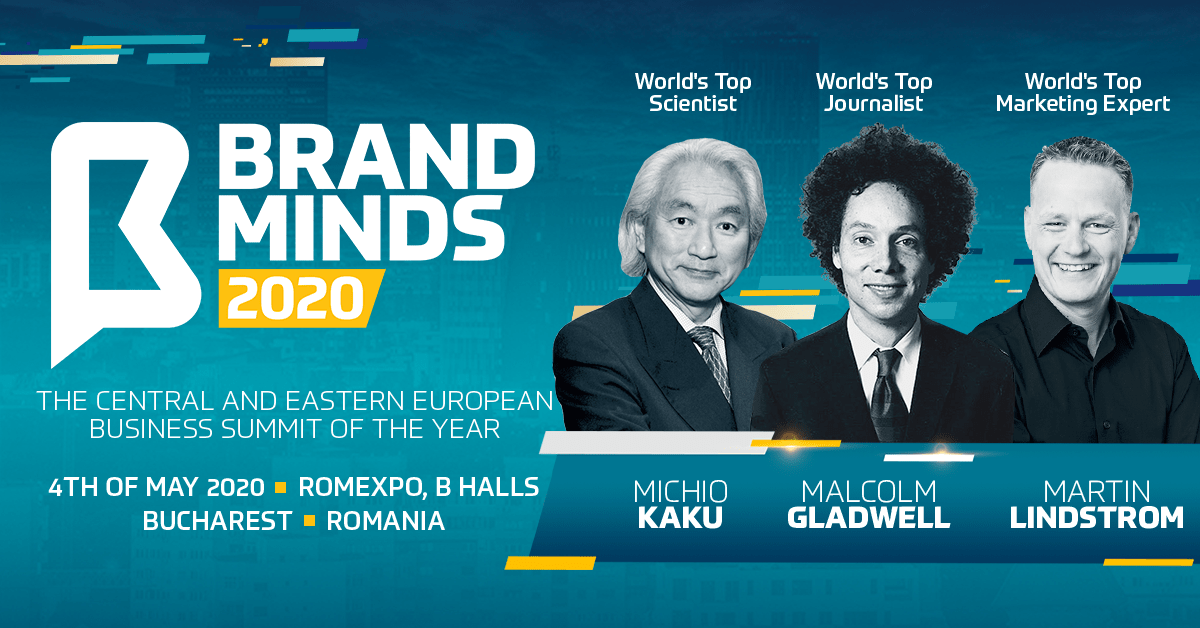
7 Things you might not know about Robert Murray
Based out of the Vancouver Lower Mainland, Robert Murray is a #1 Best Selling Author, Global Speaker and Business Strategist. He has written three critically acclaimed books on leadership: “It’s Already Inside,” “Unlocked,” “Simple Leadership – Simply Said.” that are a collection of short stories that help his readers relate to and nurture the leader within themselves.
- He believes in people and their limitless potential. He wrote Unlocked to help leaders unlock their remarkable greatness through using their ‘whole brain’ – both the logical brain as well as the emotional mind to become a more complete leader – the leader he calls a ‘Practical Leader’.
2. He is able to see simple, executable and engaging solutions where others see only problems. Has worked with senior executives of multi-billion dollar ventures to improve their future, further engage their community stakeholders, and essentially fix their problems. Bob is experienced in virtually all areas of the corporate development, and he is passionate and energized about helping companies be the best they can be.
3. Bob is a storyteller. He is a visionary, he is dynamic and he is engaging. He shares his energy, enthusiasm and knowledge in hopes of helping people discover their limitless potential. He tells stories which help people find the keys to unlock the innate leader that lies within.
4. Coming from a farming family in the heart of Canada, and working my twenties as an industrial electrician, he learned life skills that are hard to find in a classroom. Expertise such as: problem solving, emotional intelligence, and how to selflessly serve others.
5. Getting his marketing degree at University at night, while working through junior level marketing roles during the day, he learned discipline, drive and to always chase his passion.
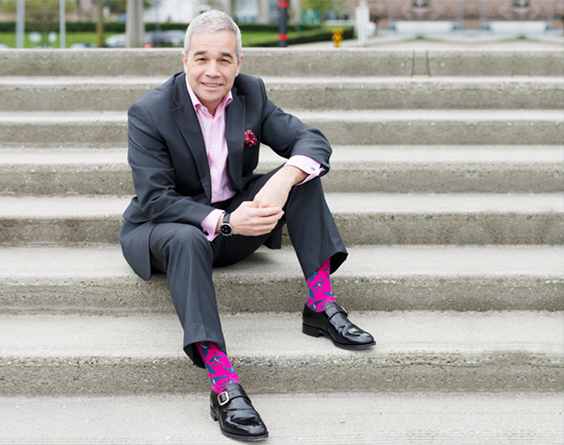
6. The single biggest mistake he sees virtually everyday in businesses on every corner of the globe are leaders that don’t take culture seriously and think that the way to success is complex strategies that no one understands. Robert believes that successful businesses have values aligned cultures and simple strategies.
7. He has built strategy for over 200 organizations from Fortune 50 to small 10 person businesses.


